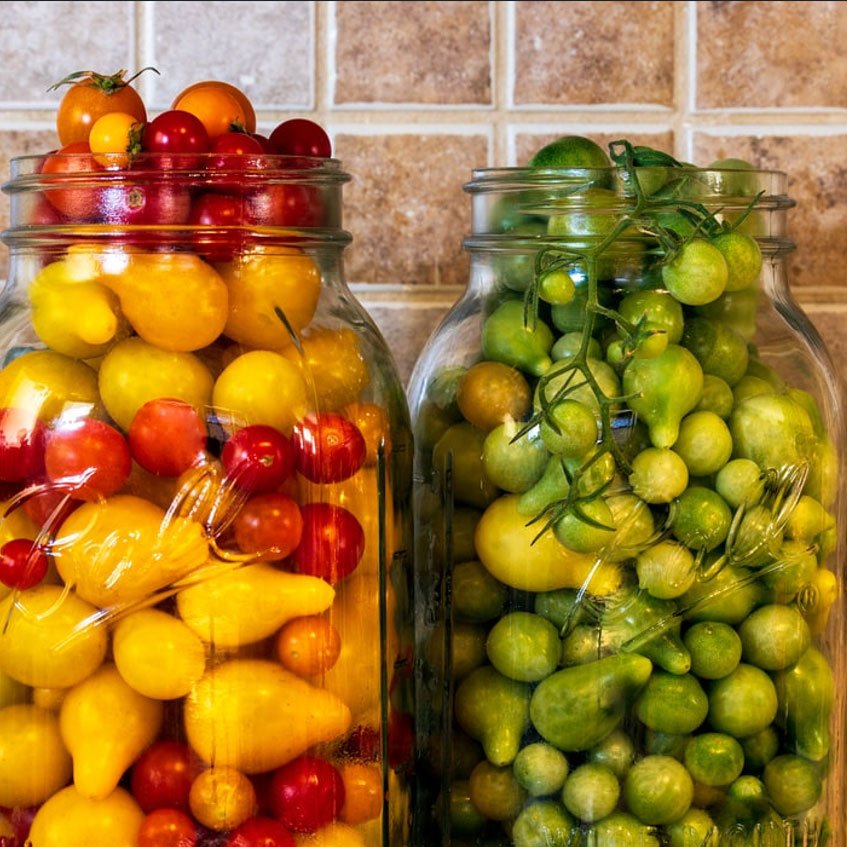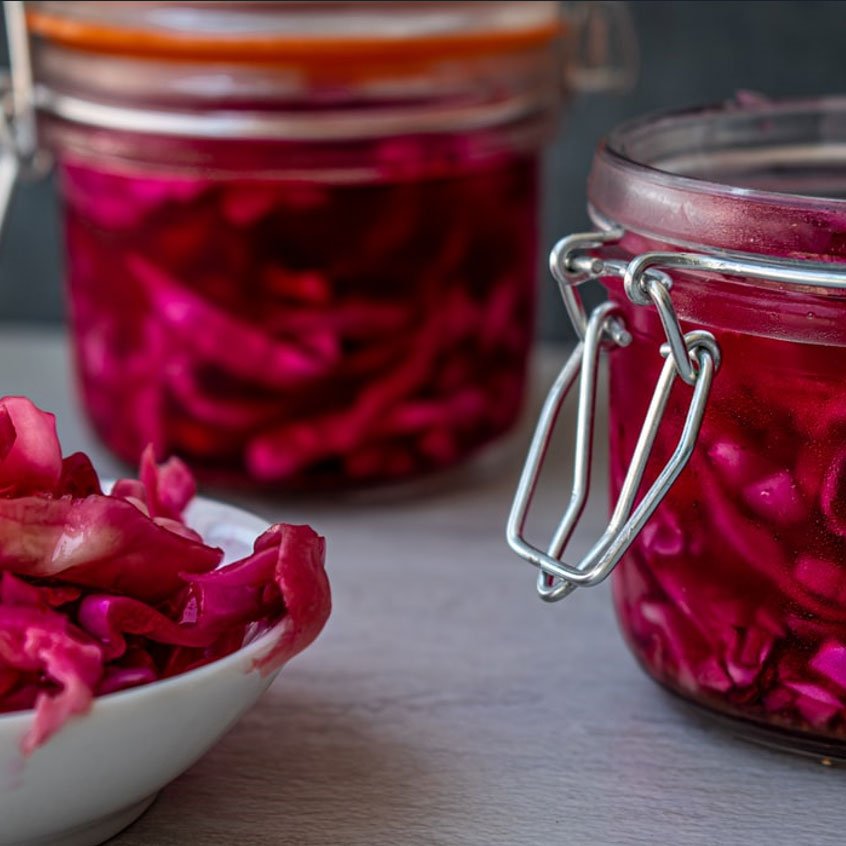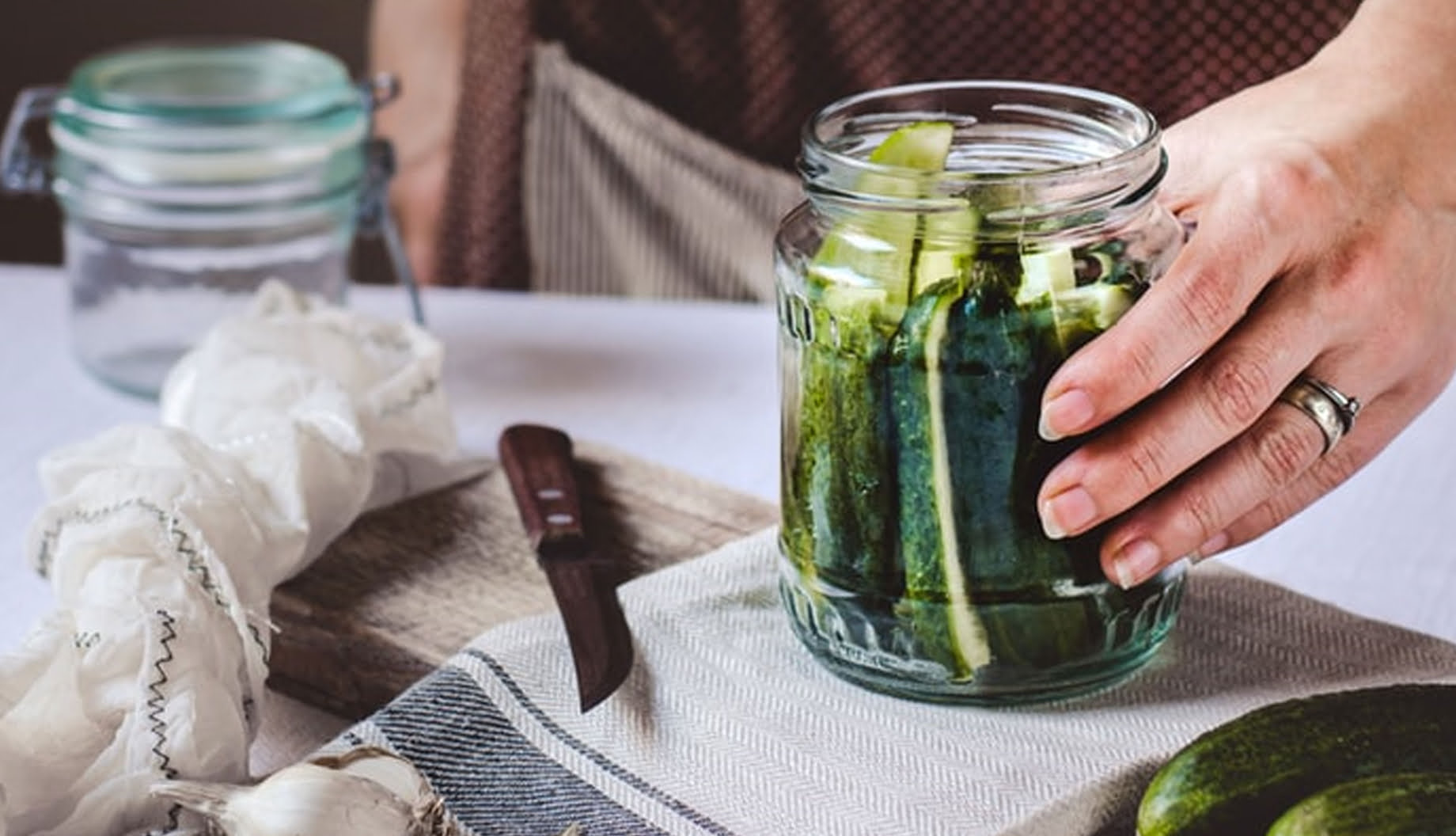Explore the art of lactic fermentation to transform fruits and vegetables into delicious preserves
The fermentation of vegetables and fruits (lactic fermentation) has been used by many peoples for several centuries, being very useful not only to make certain foods safer in the absence of refrigeration, but also to increase the stability of perishable products and improve their taste.
During fermentation, we essentially have bacteria (and sometimes yeasts) that transform the sugars in vegetables into organic acids (e.g. lactic acid, hence the name “lactic fermentation”), carbon dioxide and other aromatic compounds.
The acid produced ensures the characteristic acidity and flavor of fermented foods, but also keeps foods safe by preventing the development of pathogenic bacteria. This effect of preserving and stabilizing food is one of the greatest powers of fermentation!
Fermentation alters both the taste of vegetables and fruits and their nutritional content (increase it!), producing beneficial vitamins and compounds and increasing digestibility by “pre-digesting” some plant fibers.
If you’ve never tried fermenting vegetables at home, I’d like to share with you the easiest recipe I know, which is practically infallible!


Lactic Fermentation of Fruits and Vegetables:
1. Place an empty jar on a scale and tare it
2. Insert the vegetables into the jar
3. Optionally, add some spices to have a more aromatic product (peppercorns, bay leaves, mustard seeds, etc.)
4. Add enough water to the jar to submerge the vegetables and write down the total weight (water weight + vegetables)
5. Calculate 2% of that weight and weigh that amount of salt in a bowl (weigh at least 2% and never less than that)
6. Pour the water from the jar into the bowl with the salt and mix until the salt is dissolved
7. Pour the solution into the jar with the vegetables
8. Cover the jar and close it slightly, so as not to allow anything to enter, but loose enough so that the gas produced in the fermentation can escape freely
9. Place the bottle in a cupboard and wait a few days. Usually 3-7 days is enough, depending on what you are fermenting and the ambient temperature. At the end of day 2, you can start tasting, to make sure you’re on point.
10. When it reaches the desired flavor and acidity, close the jar tightly and place it in the fridge for better preservation!
By following this recipe, you’ll be able to turn blueberries, tomatoes, beets, figs, cucumbers and more into delicious fermented foods. Friendly tip: take advantage of spring and summer, when there is a greater abundance of fresh organic products, to ferment them. This way you will have plenty of healthy preserves to enjoy during the rest of the year.
Happy fermentations,













